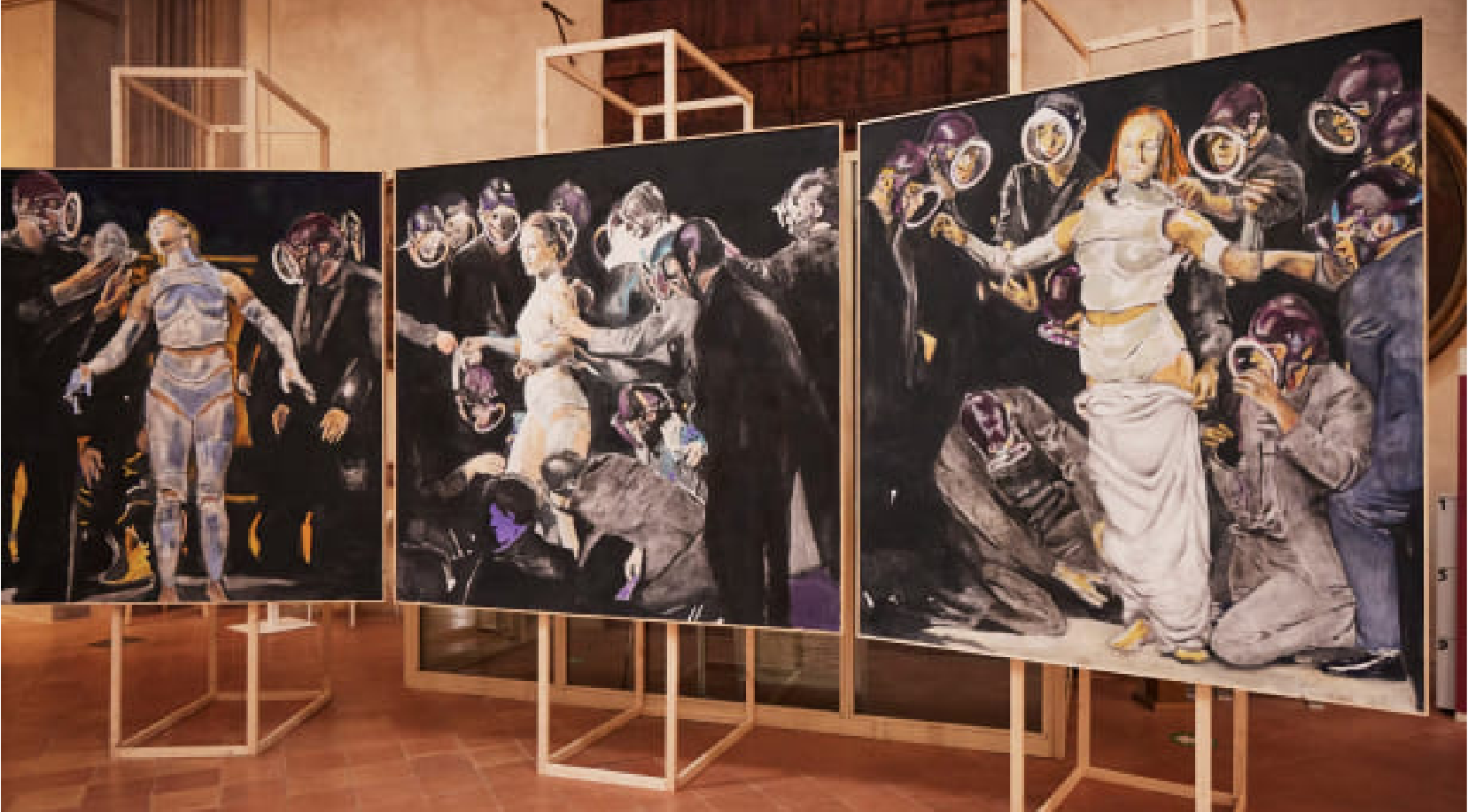(ZENIT News / Rome, 11.22.2024).- In a legal battle intertwining art, faith, and the law, an Italian judge has rejected a motion to dismiss charges against the Archbishop of Modena, Erio Castellucci, and three collaborators for allegedly insulting religious sentiments with a controversial art exhibition. The case, rooted in the «Gratia Plena» exhibition hosted at the church-museum of San Ignacio in Carpi, has reignited debate over the boundaries of artistic expression within sacred spaces.
Legal and Cultural Clash
On November 20, Judge Andrea Scarpa of the Modena Court announced that proceedings against Archbishop Castellucci, artist Andrea Saltini, priest Don Carlo Bellini, and curator Cristiana Muccioli would move forward. The four face accusations under Italian Penal Code articles 403 and 404, which penalize offenses against religious sentiment and desecration in places of worship.
The plaintiffs, represented by lawyer Francesco Minutillo, argue that the exhibition’s imagery, including depictions of Christ subjected to sexual violence and other provocative portrayals of sacred figures, constitutes a severe affront to Catholic beliefs. «Finally, we have the opportunity to present the case before a judge and uncover the truth about this exhibition,» Minutillo stated, criticizing what he called insufficient investigation by the prosecution.
The next hearing is scheduled for January 20, 2025.
Art, Controversy, and Violence
«Gratia Plena,» which ran from March to June 2024, featured provocative pieces that drew widespread criticism from Catholic groups. Among the contested works was a depiction of a crucified Christ assaulted after his deposition, a semi-nude Christ in a bright green jumpsuit in a reimagined “Descent from the Cross”, and a striking triptych of the Virgin Mary being stripped by Pharisees.
The controversy escalated on March 28 when an unidentified masked individual attacked Saltini’s most infamous painting, defacing it with spray paint and slashing it with a knife. Saltini himself was injured while attempting to stop the attacker, requiring stitches after the incident. Despite the dramatic episode, the assailant remains at large, adding another layer of intrigue to the case.
The Church’s Defense
Archbishop Castellucci, who approved the exhibition, has consistently defended its content as challenging but not sacrilegious. Drawing on St. Paul’s letter to Titus—“To the pure, all things are pure”—the Diocese of Carpi argued that the artworks provoke reflection rather than blasphemy.
However, critics, including many lay faithful, maintain that such displays have no place in sacred spaces. The backlash has been particularly intense given the historical and spiritual significance of the church hosting the exhibition.
A Broader Pattern of Controversy
This is not the first time the intersection of modern art and religion has ignited fierce debate. Similar controversies have arisen in Austria and other European countries, where portrayals of sacred figures in unconventional or offensive ways have sparked outrage among Catholic communities.
The Modena case, however, stands out due to its legal ramifications. Italy’s penal code provides explicit protections for religious sentiments, making the outcome of this trial a potential precedent for future disputes involving art in places of worship.
Thank you for reading our content. If you would like to receive ZENIT’s daily e-mail news, you can subscribe for free through this link.



